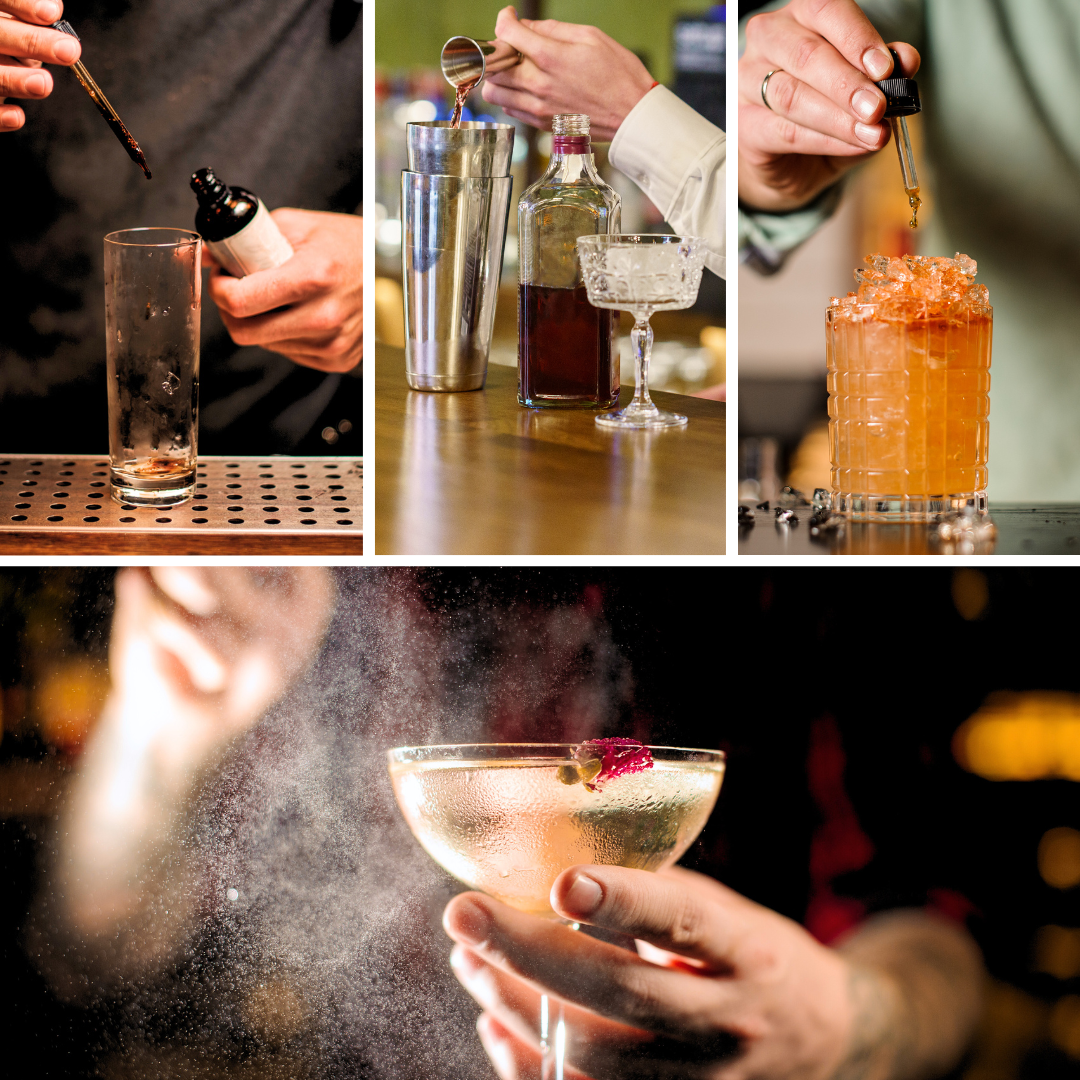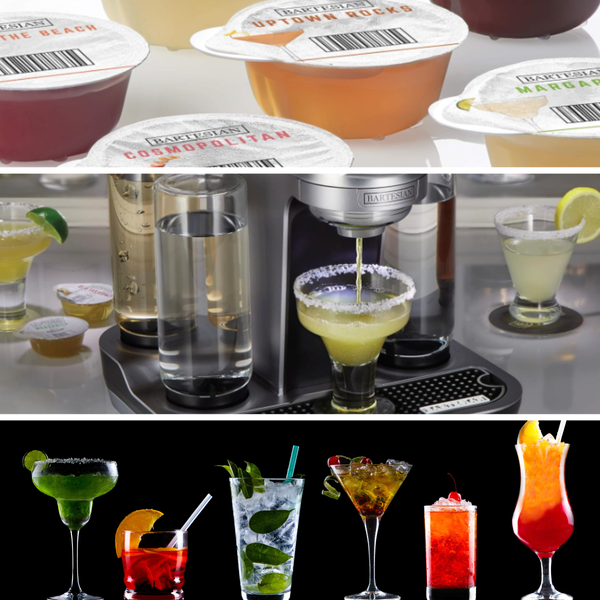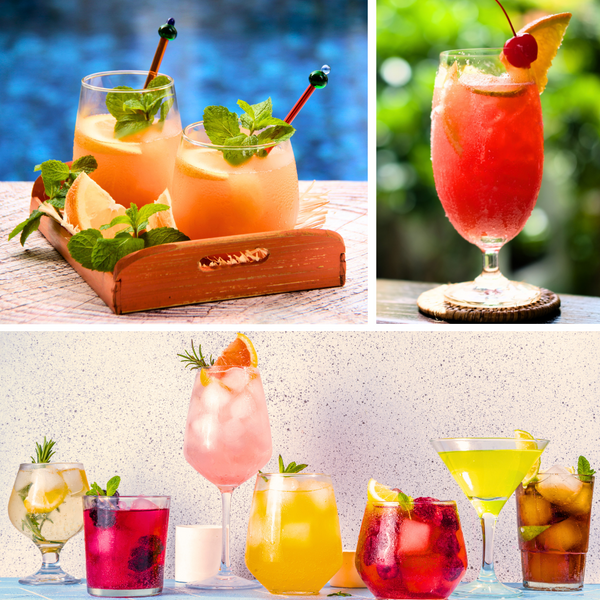The Bitters Beginnings
Cocktail bitters, those little bottles of concentrated flavors sitting on the bar shelf, are often the unsung heroes of a delicious cocktail. They're like the salt and pepper of the cocktail world, subtly enhancing and balancing the flavors of other ingredients with just a few drops.
Bitters get their name from their bitter taste, which comes from the herbs and barks they're made with. These ingredients are rich in tannins, which contribute to the bitterness of bitters. Keep in mind that most bitters carry an alcohol content of 35% and higher.
In this comprehensive review, we'll delve into the fascinating world of aromatic bitters, their history, and why they deserve a place in every home bar setup.
The Essential Line-Up
When it comes to bitters, there are a few essential types that should be part of your cocktail arsenal: Angostura bitters, Peychaud's aromatic bitters, orange, cherry, herbal, walnut, and chocolate.
The most well-known bitters brand in the industry is Angostura bitters, which was originally for medicinal purposes and created to alleviate digestive issues. Shall we begin?

Angostura Bitters
These bitters were first named Dr. Siegert's Aromatic Bitters but were later renamed after the Venezuelan city of Angostura (now Ciudad Bolívar), where they were created. Operations were eventually shifted to Trinidad, and production still takes place there today.
Angostura bitters are not made from angostura bark; instead, they are made using a confidential blend of herbs and spices. Reportedly, the exact combination of herbs and spices required for a bottle is only known by five individuals globally.
Angostura aromatic bitters offer a complex blend of tropical flavors, ideal for classic cocktails like Old Fashioneds and Manhattans. Just a few dashes into a glass of bourbon or whiskey transform the spirit's flavor profile tremendously. Angostura bitters are full of spices like cassis, cloves, and cinnamon. That makes for the deeper flavor profile they exhibit.
Peychaud's Bitters
Next, we have Peychaud's bitters. These bright red bitters were created in the 19th century by Antoine Amedee Peychaud, a Creole apothecary from New Orleans. In 1857, the advertisement for his "Aromatic Bitter Cordial" stated that it was used at the Sazerac House, thus linking it to the Sazerac Cocktail's origin story.
Peychaud's is a classic bitters that is known for its strong licorice flavor. This particular type of aromatic bitters is distinctive due to its tangy and fruity taste, which includes a strong vegetal flavor similar to rhubarb. It also features hints of candied cherry, clove, orange, and gentian root, and has a noticeable bitter aftertaste. Peychaud's bitters are a key ingredient in the Sazerac cocktail, one of America’s oldest-known cocktails.

More Than Just A Dash
Orange Bitters
As the name suggests, orange bitters add zesty citrus notes to cocktail recipes. They were a staple in pre-prohibition era cocktails but fell out of favor for many years until a recent resurgence. Regan's Orange bitters are especially popular for their deep orange flavor with strong notes of spicy cinnamon.
Cherry bitters
Bittercube Cherry Bark Vanilla and similar varieties, add a sweet and fruity dimension to cocktails, while herbal bitters can range in flavor from minty to floral botanicals depending on the herbs used. Aromatic bitters, such as Bittermens Elemakule Tiki, are complex and spicy, and often used in whiskey-based cocktails.
Chocolate or Cocoa Bitters
Finally, let's not forget chocolate bitters. Bittermens Xocolatl Mole bitters, for example, provide a rich and slightly spicy chocolate flavor. These work wonderfully in dessert cocktails or any cocktail where a hint of cocoa would complement the other ingredients.

Here's To Your Health
If you experience gastrointestinal problems due to insufficient stomach acid, bitters can aid in food digestion by increasing the amount of gastric juices.
There is some online confusion surrounding the semantic difference between digestive bitters and cocktail bitters. To clarify, they are not the same thing.
Digestive bitters such as celery bitters, and cocktail bitters are both types of bitters but serve different purposes. Digestive bitters are consumed before or after meals to aid in digestion, while cocktail bitters are added to cocktails for flavoring.
Some digestive bitters such as ginger bitters can add depth of flavor to drinks that call for ginger ale, such as Moscow Mules, A Captain Rum and ginger, or a Dark and Stormy.
The Bitters End
In conclusion, cocktail bitters are an essential part of mixology, adding depth and complexity to your drinks. Each type of bitters shine a unique flavor profile, allowing you to experiment and craft truly unique cocktails.
Many of the best bitters producers often offer sets or gift packages containing multiple flavors, which allow customers to try out different flavors without having to purchase an entire bottle that they may not like or use.
So, next time you're mixing up a drink, don't forget that dash of bitters!

Grab A Cocktail Smoker For Even More Flavor!








